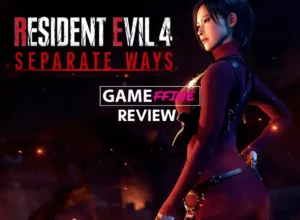Turn-based strategy always gets me pumped up for long gaming sessions. Now suppose that the strategy game in question is essentially a boardgame. Please The Gods sets out to be exactly that. It combines a turn-based combat system with board-game aesthetics and gameplay, with some RPG mechanics thrown in. With a sprawling overworld map and Finnish Mythology thrown into the mix, does this game hold up? Let’s find out

Story and Narrative
The game is based loosely on “Shamanistic Finnish Mythology”, according to the developers. Everybody you know and love is starving, and you’re their only hope. The end goal is finding the Sempo, a treasure that contains all the riches and food and anything else you might ever need. This sets the premise of the game, and you are thrown into the world.

There are quite a few branching paths present in the story, which is told through the character and his pet moving through the world map. The map is split into encounters, where there’s usually a story bit, followed by a choice. Based on what choice you make, you can either face combat or move on your merry way to the next encounter. I’ll talk about combat a bit later, but this makes for a smooth and linear story experience. The downside of this, however, is that the replay value is basically none. Yes, there are branching paths, but the end result of those choices is basically the same. The quests are the same, and the encounters leading up to the Gods are the same.

Speaking of the Gods, the story is pretty good and had me engaged right down to the end. While not the best story in an RPG, it still had its gut-punch moments and had me quite interested till the end. Managing your food reserves while helping the NPCs, or fighting with them to take their food reserves, there are a lot of such moral choices that litter the game. A really nice touch.

Gameplay and Mechanics
Let’s talk about the elephant in the room: The RNG/dice roll based gameplay. When you enter a combat encounter, the game switches over to a turn-based combat mode. Unlike other turn-based games which usually have a bit on RNG already, this game takes it to the next level by linking combat to dice rolls. At the start of the turn, both the attacker and defender roll two dice and their total is added to the bonuses the characters have to their attack/defence.

After the dice roll, you select an ability card that either adds a direct attack point, or an additional dice roll and so does the opponent. Higher value wins, and defender wins on a draw. That’s literally it. The combat feels very lacking and simplistic. There’s not a lot of tactical choices to be had, and the game relies heavily on RNG. And the game isn’t even randomised after you die, which you will- A lot. This makes the game feel repetitive and boring. If not for the story, I don’t think I would have felt the incentive to complete the game.

The skills are interesting at times, like the “Vicious Charge” which immediately adds two additional dice rolls, or the “Cautious Poke” which adds one dice roll for attack and two defence dice rolls for the next turn. However, if the RNG is in your favour, the entire skill tree becomes pointless and you can literally beat the game with the starting set of skills. This realisation struck me as I beat the final boss of the game with a series of Cautious Pokes. Yikes.

Another point of contention is the food/hunger/health mechanic. Food is found on designated map encounters and is used up everywhere else. While this does provide a side objective in the sense of whether you give it to a passing NPC or save it for the future. However, I soon learned that the choice is padding, because whatever you do, you will get it back later. This makes the mechanic feel a bit tacked on. Health is also not replenished between encounters and needs a specific story point to restore. Some people might like this, I personally did not.

Visuals, Performance and Sound
The game’s visuals scream “BOARDGAME”, and the feel pretty much matches the visuals. The art style is pretty “Nordic”, minimalistic and looks crisp while playing. The overworld map looks like a digital landscape drawing, which just adds to the feel of the game.

The performance is what you might expect from a Unity game, about perfect. I had zero crashes and a steady 60fps on my testing desktop and an AMD A10 laptop. Nothing to complain about here.
[toggles behavior=”toggle”] [toggle title=”Minimum requirements”]Requires a 64-bit processor and operating systemOS: Windows 7 or newer
Processor: SSE2 instruction set support
Memory: 4 GB RAM
Graphics: Graphics card with DX10 (shader model 4.0) capabilities
DirectX: Version 10
Storage: 1 GB available space[/toggle] [toggle title=”Review Specs”]OS: 64-bit Windows 10 / Manjaro Linux KDE
Processor: AMD Ryzen 5 1600
Memory: 16 GB RAM
Graphics: NVIDIA GeForce 1060
DirectX: Version 11[/toggle] [/toggles]
The in-game battle music is pretty average, and since you spend most of your time here, it gets repetitive. The overworld music is much better, but doesn’t really play all that often. After a couple of hours, I just muted the in-game audio completely. The soundtrack definitely could have been better.
Verdict
Please the Gods offers a decent amount of enemy variety, locations, dialogue options and combat styles held back by the extreme amount of dependence on the RNG in an RPG-like strategy game. Even with the story pushing the game front, I can’t enthusiastically recommend this game to either RPG fans or strategy fans. However, the saving grace is the price. At ₹349, the game isn’t too badly priced, and would warrant a “Try it out, YMMV” recommendation from me.




